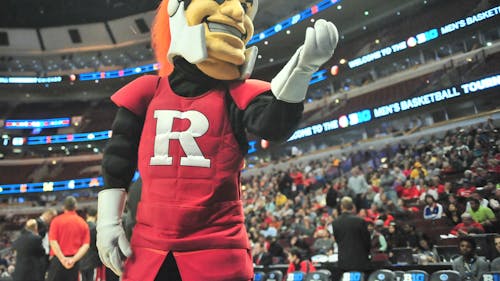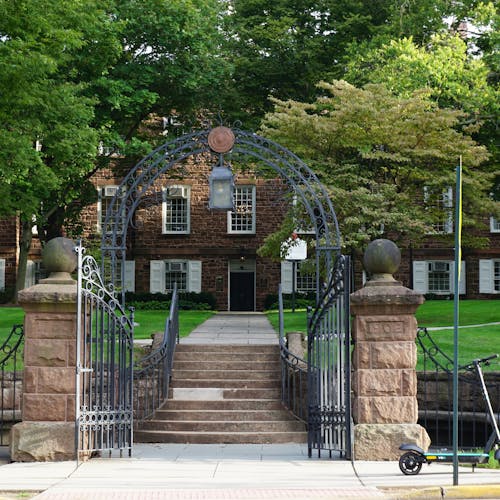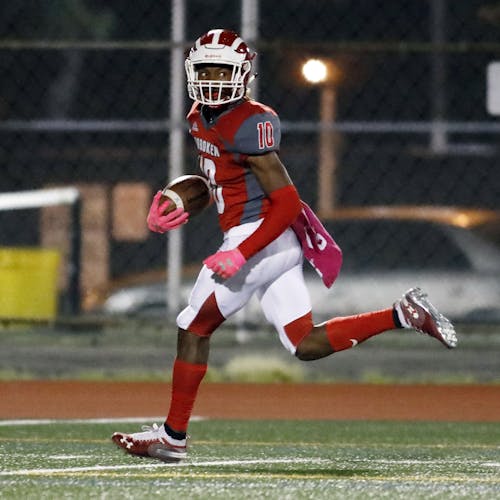RUSA passes bill to diversify Scarlet Knight mascot

Since the initial adoption of the Scarlet Knight mascot in 1955 and its several transformations in the succeeding decades, the mascot has stormed fields, courts and countless parades sporting largely Caucasian features. A recent student government bill is looking to diversify the Scarlet Knight by adding a couple of mascot friends, but questions linger in the air about student, staff and alumni responses.
The Rutgers University Student Assembly recently passed a bill intended to support ethnic and gender diversity by adding multiple Scarlet Knights that could be black, Latino, Asian, female or third gender in addition to the existing Caucasian Scarlet Knight, said Emmet Brennan, student assembly parliamentarian.
“What we were thinking — the way the bill’s laid out — it’s not defined that we need an Asian knight, a black knight, a Latino knight,” said Brennan, a School of Environmental and Biological Sciences first-year student. “That we would really leave it up to the different student organizations ... and basically the student body as a whole to determine how many knights they’d like and what these knights would represent.”
Brennan said he founded the idea behind the bill working as a press box server at a football game, where he noticed the mascot had blue eyes and light skin.
“This does not seem right,” Brennan said. “Our mascot does not represent how diverse we are as a school.”
Over this semester, Brennan educated himself on different ethnicities and genders and worked with friend Mohamed Asker, the assembly’s student affairs chair and a member of the Arab Cultural Club, to create a bill that was passed by a majority of the student assembly’s top players at their last meeting.
“The bill did pass the body, and it wasn’t by a slim margin,” Brennan said. “(But) there were some concerns over the mascot possibly being offensive if it wasn’t done properly.”
To create the most appropriate mascot prototypes, Brennan said he reached out to Rutgers’ black, Latino and Asian cultural councils to let them weigh in on the bill.
But more than reaching out to just the multicultural organizations, Brennan said he wants to get the Rutgers community involved in the dialogue.
“What we were really hoping is that this would be a discussion with the entire student body,” he said. “So we would have a working committee of the different multicultural (organizations), possibly the Queer Caucus — basically students who represent a unique voice, and have them all working together at the same table to make sure red flags that arise with any of those groups — that mascot would immediately be tabled.”
At this point, and hopefully with positive feedback from the majority of the student body, Brennan said he would take the bill to Rutgers administration for the first time and hope they would work with the student assembly to create official sketches of new mascots.
But aside from persuading the staff, Brennan said bringing the proposal to attention of Rutgers alumni could pose as another contention.
The bill has not yet been unveiled to alumni, but Brennan said backlash is “inevitable,” and that the student assembly anticipated anger from alumni, which is why the current mascot would not be eliminated and more mascots would be added.
“I mean, obviously you’re going to have people who are going to say, you know, we’re destroying tradition,” he said. “It’s inevitable. There’s always going to be people who complain, but I think we won’t receive that much pushback because we are keeping the current knight. We’re just, I think, taking pride in our current diversity as a school as we are now, but also recognizing where we were.”
Brennan said he recognized reactions from alumni could parallel reactions received in 2013, when Rutgers Glee Club’s Patrick Gardner, director of the choral activities, revised certain verses of the 140-year-old alma mater, “On the Banks of the Old Raritan,” to be gender-neutral.
Brennan was still in high school in 2013, but said he anticipates less backlash for the mascot proposal compared to the alma mater controversy.
“From what I understand of it, they changed the alma mater, so it was no longer the same one,” he said. “We’re still keeping the same mascot, so I don’t think it will be nearly as much negative pushback. And also with the alma mater, I believe there wasn’t much a of say — the student body didn’t have a lot of say — a few individuals decided they were going to make this change.”
Next to community responses, funding might pose a considerable challenge.
The student assembly could rely on University funding, alumni funding or student assembly funding which is derived from student fees, Brennan said.
Although student funding is an option, he said the assembly is least likely to explore this choice.
“I think we can get the other two sources of money much easier, and I would rather not spend student money on something I can get someone else to pay for,” he said.
Overall, Lamar Nero, a School of Arts and Sciences sophomore, looked favorably upon the proposal.
“In a nutshell, I think it’s a good idea because obviously Rutgers is so diverse,” he said. “Not saying I have a problem with a white mascot, but at the same time I don’t have a problem with diversifying it.”
But Sneha Lakhani, a Rutgers Business School junior, questioned the bill.
“I feel like it’s a bit far-fetched, but I appreciate the idea of accepting more,” she said. “But I don’t feel like (diversity) has to be shown in that manner as well because Rutgers does a good job showing it in every other way.”
However, Brennan emphasized the root of the bill.
“This bill is about representing how diverse Rutgers is, and that we should take pride in that we’re one of the most diverse schools in the nation,” he said. “It’s not really about taking away from the current mascot we have, but really celebrating that diversity and involving the student body in our mascot.”
Katie Park is a School of Arts and Sciences junior majoring in political science and journalism and media studies. She is the News Editor at The Daily Targum. Follow her on Twitter @kasopar for more stories.



